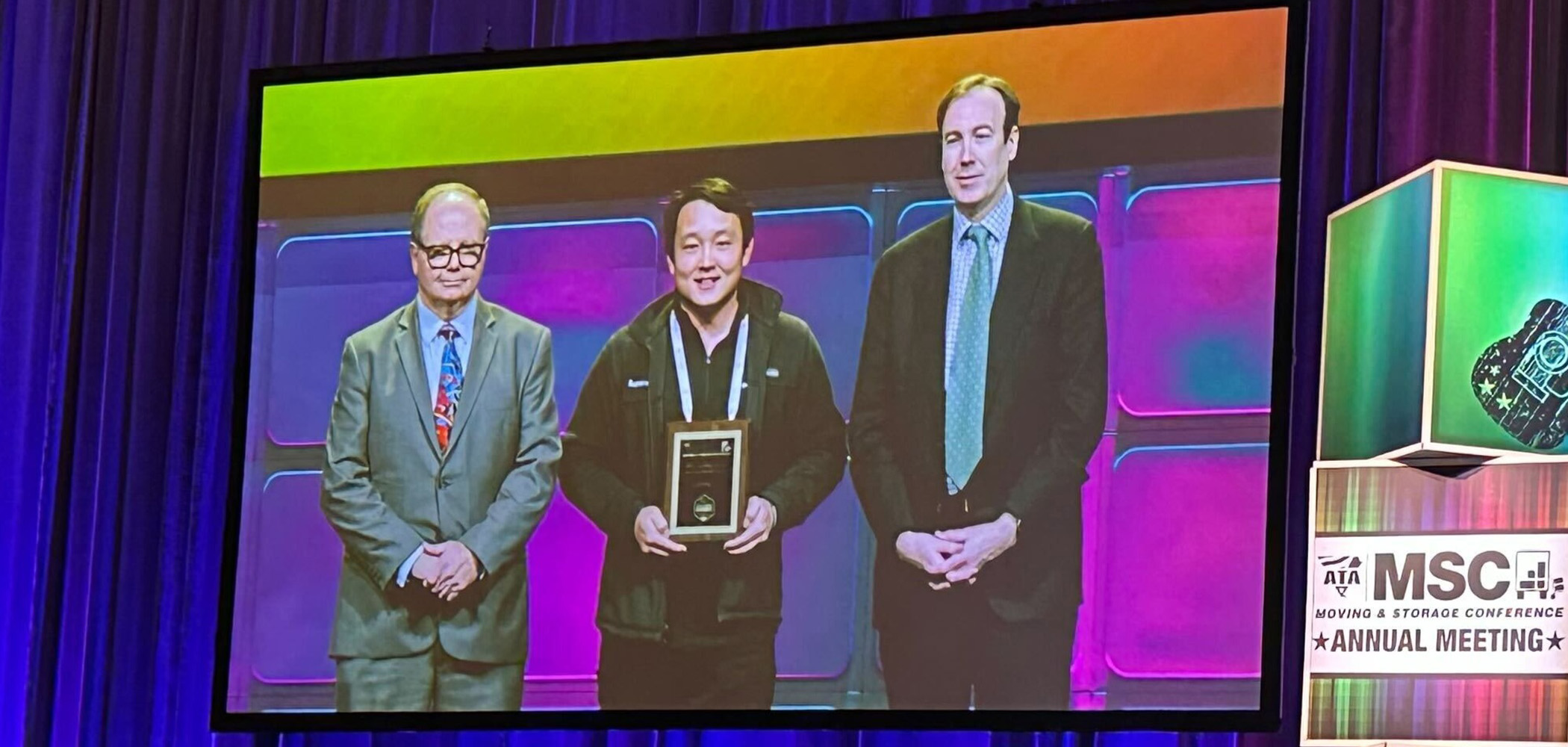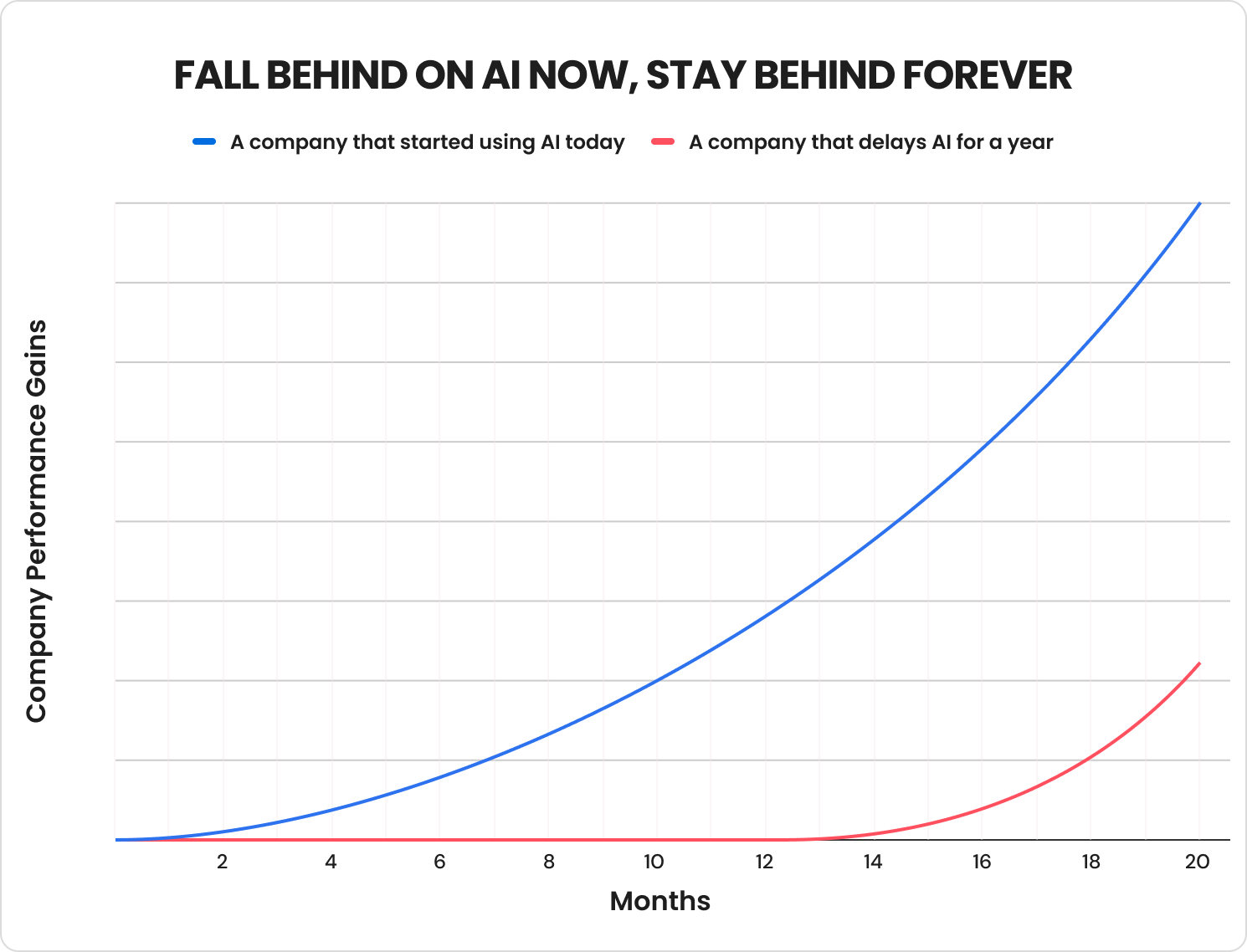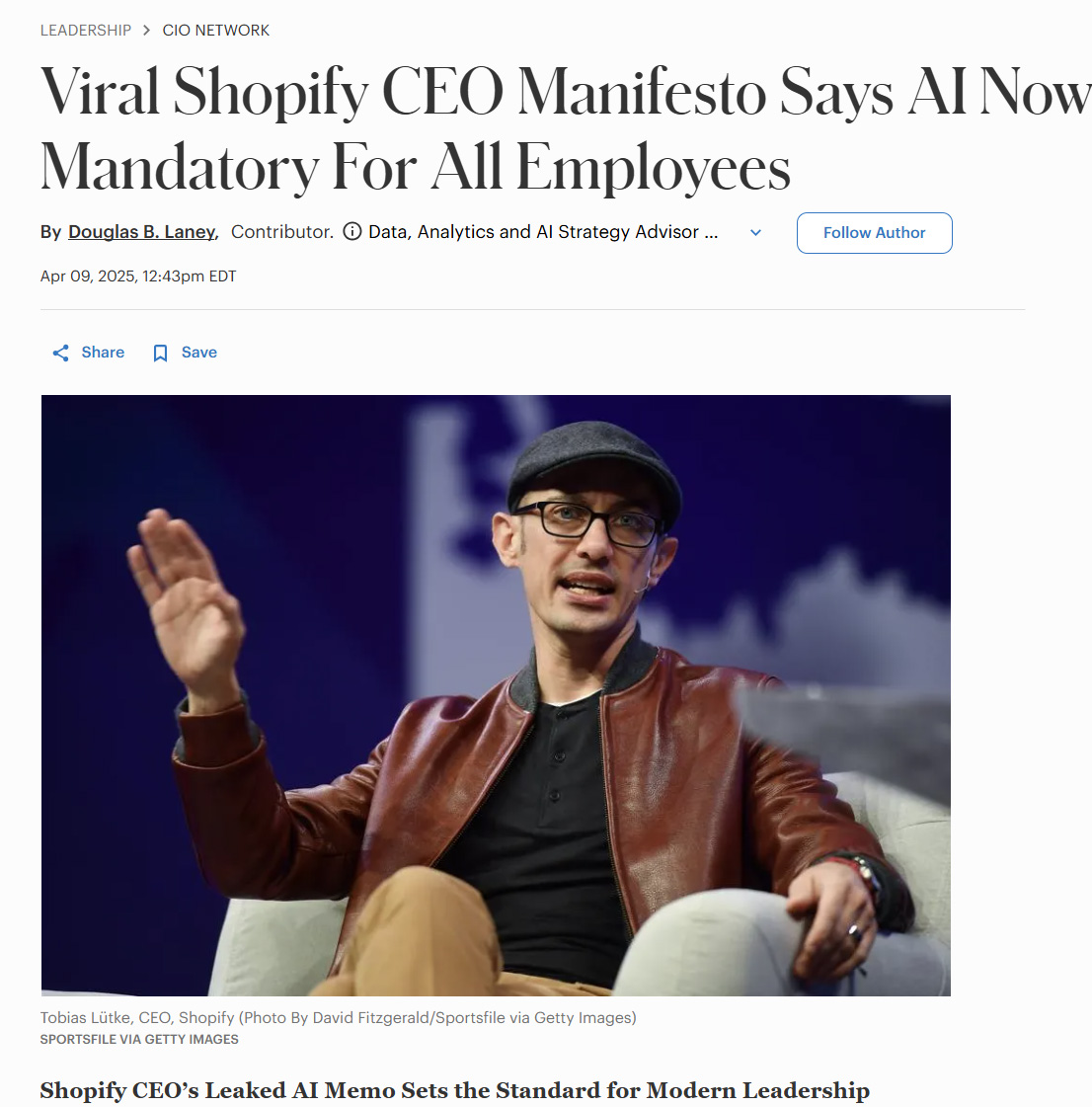Why favors don’t get you referrals from realtors, and what actually makes them send you business (featuring a real mover who figured it out).
Being afraid of AI is the biggest risk (ft. Supermove CEO Wonjun Jeong)






Being afraid of AI is the biggest risk (ft. Supermove CEO Wonjun Jeong)

Table of Contents
We’re in the room with major van lines and moving companies at nearly every conference. Whenever AI comes up, the conversation shifts to risks like data leaks and security threats. These are real issues, but they’re overstated. The industry has become so focused on what could go wrong that it’s stopped exploring what could go right.
AI will have the biggest impact on humanity since the Internet. Most leaders are waiting for a perfectly safe “ticket to pass GO” to start using it. But AI is moving too fast. You can’t afford to wait. The longer you do, the more time your competitors have to build AI into their operations, pull ahead, and leave you permanently playing catch-up.
Being careful is fine. Standing still isn’t.
“I get the security concerns, but every time I’m at these panels, they take up more than half of the conversation. I just think that’s backwards. It's like you see the giant tip of an iceberg and you’re so scared you don't even explore what good could lie beyond it.”
— Wonjun Jeong, Co-Founder & CEO of Supermove
This article is written from the point of view of our Co-Founder and CEO, Wonjun Jeong. His stance reflects how we, as a company, think about AI. Later in this article, we’ll explain what Wonjun would do if he ran a van line today.
You’re right about security. However…
If someone in your company uploads your financials to a public AI tool, and that data ends up in the model’s training set, and then a competitor somehow accesses it (which is nearly impossible), yes, that would be a disaster. No one’s denying it. But if edge cases like these make you avoid AI, you’re letting rare risks dictate your future. You can reduce those risks to near-zero with a few basic policies.
1. Invest in enterprise AI platforms, and make sure the AI tools and platforms you already use offer enterprise packages.
For example, platforms like Microsoft Copilot or OpenAI’s Enterprise ChatGPT use their respective AI models, but wall them off just for your company. Enterprise AI uses what it already knows, but never gets trained on your data. Nothing you share with it (like files, financials, and customer info) should go anywhere. It’s like having a private online bank, but for AI. You should be protected under their security policies.
(By the way, Supermove already does this. All our clients get enclosed environments, and we never train our AI on your data.)
2. Set internal rules for what can and can’t be shared with AI.
You don’t need a 20-page security protocol. You need to draw a line, for example:
- What’s OK to share: internal processes, documentation, SOPs, generic ops data
- What’s not OK to share: customer details, financials, personal identifiers
This gives your team clarity and confidence. They can use AI without putting the company at risk.
These policies won’t eliminate all risk, but will shrink it to something extremely unlikely, like getting struck by lightning. Besides, many moving companies already accept bigger risks. They still run outdated, non-cloud, in-house servers sitting in back rooms. If a few foreign hackers were to target them, would they hold up? Not sure. If that’s an acceptable risk, arguably, using AI is significantly safer.
“The worst case (of AI data leak) is terrible, but the chances of that happening are low. If you're scared of that, then you're just as worried about Wells Fargo getting broken into online and refusing to use online banking because of it.”
— Wonjun Jeong, Co-Founder & CEO of Supermove
If you make everything about data security, you’re not thinking big enough. You haven’t gone deep enough into what AI could do for your business. When you do, it becomes obvious that doing nothing is a MUCH bigger risk. If you’ve walled off your AI environment, set internal policies, and brought the odds of any data leaks way down, and you’re still hesitant to use AI, then it’s not really about risk anymore. It’s an excuse. And excuses are a competitive liability.
If you wait now, you can’t catch up later.
Previous tech waves didn’t punish you for being late. Take Facebook. Your friends might’ve joined in 2009 when it went mainstream, but it wasn't a big deal if you joined 5 years later. You ended up getting the same features and experience.
But AI doesn’t work like that. It’s not a straight line. It’s a curve where every improvement builds on the one before. It’s evolving faster than anyone has expected. Last month's best practice might already be outdated. New tools are coming out daily. Moving companies that use AI today are stacking wins. They’re solving problems for their business, building processes, getting better at using tools, and becoming more efficient.
Now, imagine two moving companies. One starts using AI today, and the other plans to wait a year. After a month, the difference in performance is small. In 3 months, the first company is performing exponentially better because AI is improving exponentially. And within a year, they’re not even in the same league.

This is why the “wait and see” strategy is a death sentence. You can’t flip a switch on AI later. You'll have to start from the bottom of the curve and work your way up like everyone else did. You’ll be figuring out basic AI use cases and benefits (like rewriting emails), while your competitors have amassed advantages. They’ve trained their teams, become more efficient, and learned AI techniques you haven’t seen yet. You’ll stay permanently behind, and that’s the biggest risk of all.
Big moving companies with just as much at risk as you already are using AI, like Atlas Van Lines and Bekins, but what’s happening is bigger than the moving industry. Shopify’s CEO recently made using AI mandatory for all employees. Other companies like Citi, JPMorgan Chase, and Deloitte are also deploying AI and shifting their cultures around it.

AI improves you across three competitive levers.
There are three ways to win in moving: competitive pricing, having a superior brand and customer experience, and being faster and more efficient. That’s it. Every van line and moving company is competing on some mix of those three. For the first time, you can get an edge on all of them thanks to AI.
It can help you charge less without slashing your profit. Give every customer a premium customer experience without cutting corners anywhere else. Operate faster without burning your people out.
Whatever your strategy is, AI sharpens it.
1. Competitive pricing
If two moving companies deliver the same customer experience and speed, the cheaper one always wins the job. AI can help you compete on price without bleeding margin. For example, if you’re using AI to answer phone calls after hours and free up your people from repetitive tasks, you’re now spending less to run the same business. You can charge less and still make your math work.
2. Customer experience + brand
Getting glowing reviews and referrals starts with your first interactions with customers. It happens well before move day, and even before you send a quote. It’s how fast you pick up the phone, what questions you ask, and how you follow up. Delivering that kind of standout experience is hard and manual. Most of it depends on who the customer talks to. Some reps are great. Others are average. Maybe you already know who you’d assign to a tricky customer, because consistency still depends on talent.
AI lets you scale that. Your best rep can become the floor, not the ceiling. You can use AI to respond to customer concerns, answer questions on your website, and even tell your reps what questions they should ask in real time, so every customer gets A+ care.
3. Speed + efficiency
A lead comes in, but someone has to log the info. Then follow-up. Then coordinate. Then invoice. None of these steps feels like a bottleneck. That’s the problem. They don’t look bad in isolation, but they bleed hours when they add up. Multiply those inefficiencies across dozens of jobs per month, and you’re regularly slower than your competitors. AI can help with that. For example, it can:
- Answer your phone while you sleep
- Take the data of leads that come in, automatically update your CRM, and write a personalized response email
- Take notes on your calls and summarize customers’ needs, so your team can build quotes faster
People do many of these steps today, and that’s not a problem. But if AI can handle those repetitive parts 10 times faster, why wouldn’t you use it?
Protecting your people from AI is actually hurting you.
We hear the moral concerns, too. “What if AI replaces jobs?” “What happens to our people?” You’re right to question that, and that fear is normal. When people don’t fully understand some things, they default to fear. It’s always been like that with every great technology that came along.
Remember the internet in the 90s? Only 1% of the people were excited. Everyone else (including the media) panicked. True, the internet is a scary place with plenty of risks. But fast forward 30 years, and look at what it’s made possible. Look how easy it is to start a business, access information you couldn’t access before, and talk to anyone. It changed the world for the better. AI will do even more.
When you reject it on moral grounds, you also take a hit to run a less efficient and less profitable business. That feels noble, but it drags the whole company down. Your people suffer too. They get fewer opportunities to grow in their careers, make more money, and provide for their families.
Some jobs will go away. If someone in your company is scanning paper and typing it into a system, AI can do that much faster. The question then becomes: “What do you do with that person?”
At Supermove, we believe you take care of them. AI isn’t here to replace your people, but free them from the work no one wants to do anyway. Besides, whether you like it or not, AI is already here. If you really care about your people, you’ll stop trying to delay the inevitable.
The better question is: what will you do with the time, talent, and energy AI frees up? Will you help your people perform better with it? Move them into roles AI can’t replace? Use that momentum to grow your business, pay your people more, and hire even stronger talent? None of that can happen if you wait.
The way forward
If Wonjun were in your shoes, here’s what he would do (and what he would advise every large moving company and van line to do). First, he’d take the data risks seriously. He’d implement three straightforward policies we covered earlier:
1. Clearly define what kind of data can and can’t be shared with AI tools.
2. Make sure the whole company uses enterprise AI platforms.
3. Enforce confidentiality practices to keep internal data secure.
This wouldn’t eliminate all risks, but it would reduce them to a minimum. It would be enough to move forward. Once that’s handled, Wonjun would lead the company through four stages to make AI work for him and his people. Those four stages would be mindset and culture, personal productivity, team productivity, and finally, company rewiring and platforms.
Mindset and culture
Empowering your company with AI starts with you. The best moving companies are already using it across their business. They’re experimenting nonstop, even 10 to 20 times a day. Some things didn’t work. Others did. The ones that worked changed how their businesses run.
Whatever they work on, they ask themselves: “Can AI help me do this?” They reward people for trying, even when it doesn’t work out, because trying still moves the company forward. If Wonjun were running a van line or big moving company, he’d push this mindset. If someone figured out how to save hours or automate a task with AI, that would be a win for the whole company. He’d publicly recognize it, roll it out, and tie part of that person’s compensation to the value they created. (He already does this at Supermove.)
Now it’s not just leadership pushing AI. It’s the whole company pulling toward it. You can begin shifting your culture today with simple changes, like replacing Google Search with an AI assistant. It’s so easy to start there and get the momentum going.
Personal productivity
One of the coolest things about Iron Man is when Tony talks to JARVIS, a personal AI assistant who listens, responds, and helps Tony think. But do you know what’s even cooler? You already have JARVIS in tools like ChatGPT and Claude. Most people just don’t use it much.
Once the culture is in place, and your people feel like they’re allowed to experiment and are excited about AI, you can start solving your own problems with it.
For example:
- If you're responding to a negative review, run your reply through AI first. Ask it to make your response sound calm and professional before you hit send.
- Are you sorting through a messy claims thread that’s dragged out over three weeks? Paste it in and ask AI to summarize the key facts into something you can send to insurance.
- “Hey AI, please take this PDF I scanned and pull out all the handwritten text!”
These are the small, repetitive tasks that burn your time. They add up. So whenever you need to handle those tasks, ask yourself: “Can AI help me do this?” Try it and see what happens.
Team productivity
This is when your teams will start improving how the business runs, together. Here are some examples. Suppose your sales team is split-testing three different scripts. You can feed the weakest script to AI, ask it to rewrite it, and explain why it made those changes. When the worst script improves, tell AI to do it again. Repeat this as many times as you want. In the end, you’ll have three fantastic scripts that are way better than what you started with.
Hiring is another example. Let’s say you’re hiring a dispatcher, but you’re not sure what makes for a great or a bad one. AI can help you figure it out. You can tell it: “Take this candidate’s resume. Here’s a transcript of my interview with them. Grade this dispatcher on 10 criteria.” And if you don’t know those criteria, you can ask AI to tell you that, too!
Company rewiring and platforms
You’ve experimented with AI. The things that worked well should be baked into the company’s SOPs. Now it’s time to make the change permanent.
Give your whole team access to AI tools. Many of them cost $20 a month. Some are free. For that price tag to pay off, an employee only needs to become half a percent more effective each month. That’s more than realistic.
But tools alone aren’t enough. Work with partners who can help you implement change through your company and roll out those AI solutions that will help you long-term. Wonjun would do this, and it’s something we at Supermove already help our clients with.
*You can ask us about that here.
Final thoughts
You’ve stayed ahead for all these years by being disciplined. You made the responsible call to wait, analyze, and move when everything was perfectly safe. That worked because the market moved more slowly, and you had the operational strength to hold your lead.
But AI breaks that model. Delaying AI is the riskiest, most irresponsible thing you can do. Waiting doesn’t protect you anymore; it does the opposite. It gives everyone else time to close the gap and eventually pass you for good.
You don’t need more analysis. Just start where the friction is obvious. Use AI to clean up a repetitive task. Trim hours from something slow. Move to the next problem. AI isn’t something you can figure out in a meeting, anyway. It’s a curve you must go through.
Whatever excuses you have about AI, kill them all by next week. Then move.
Send Wonjun an email! We want to hear your take on this.




.png)